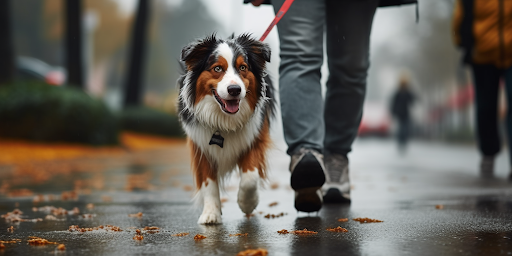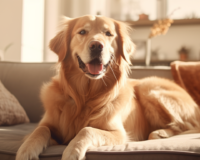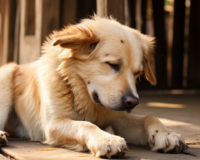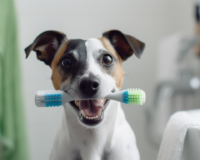Hassle-Free Dog Walks: An Informative Guide
Walking your dog should be fun and relaxing. Many dog owners face challenges that can make walking their dogs difficult, such as pulling on the leash or barking at strangers. However, these problems can be solved with some knowledge and the right approach.
In this guide, we will share tips on how to make dog walks easier and more enjoyable. We’ll cover everything from preparing for your walk to handling common issues that might arise while you’re out and about. By understanding your dog’s needs and learning a few helpful strategies, you can transform your daily walks into delightful experiences for both you and your pet.
Our aim is to provide simple, easy-to-follow advice that will help you enjoy walking your dog without any hassle. So, grab your leash, and let’s make those dog walks a joy for everyone involved!
Understanding Your Dog’s Needs
Understanding what your dog needs from their walks is very important. Walks are more than just exercise; they help your dog stay happy and healthy in many ways. Each dog is different, and knowing what makes them comfortable and excited about their walks can make a big difference.
First, consider your dog’s age and health. Young puppies have lots of energy and need short but frequent walks. Older dogs might prefer slower, shorter walks. Also, think about your dog’s breed. Some breeds need a lot of exercise to burn off energy, while others do well with less physical activity.
Walks are also a chance for your dog to explore the world. Dogs love to see, smell, and discover new things. This assists in maintaining their mental acuity and engagement. If you only walk the same route every day, try changing it sometimes to give your dog new sights and smells.
Socializing is another key part of walks. Dogs often like meeting new people and other dogs. This helps them learn how to behave well around others. However, if your dog seems scared or aggressive around new friends, it’s important to go slowly and maybe get help from a trainer.
Lastly, pay attention to how your dog feels during walks. If they appear fatigued, consider returning home. If they’re pulling on the leash because they’re excited, they might need more time to learn how to walk calmly.
By understanding and meeting your dog’s needs, you’ll make walking a fun and healthy part of their day. This means you both can enjoy your time outside even more!
Preparing for a Walk
Preparing for a walk with your dog is an important step to ensure you both have a great time.
Below are the actions you can take to get ready:
-
Calm Down Time: Before you go out, give your dog a little time to relax. This helps them not be too excited or jumpy when you start your walk.
-
Bathroom Break: Let your dog go to the bathroom before the walk. This prevents them from feeling too rushed to find a spot while on the walk.
-
Check the Weather: Look outside or use an app to see if it’s very hot, cold, or rainy. Dress your dog appropriately if they need protection from the weather like a coat or boots.
-
Pack Supplies: Bring along some water for both of you, especially if it’s warm out or you plan on a long walk. Remember to pack a bowl for your dog to drink from.
-
Use Proper Gear: Make sure your dog’s collar or harness fits well and isn’t too tight or too loose. Use a leash that’s strong but gives your dog some freedom to explore.
-
Bring Bags for Cleanup: Always have bags with you to clean up after your dog. This keeps the neighborhood clean and shows respect to others.
-
Plan Your Route: Consider your destination carefully. If your dog gets nervous around lots of noise or people, choose a quieter route.
-
Quick Health Check: Before you leave, check your dog quickly. Make sure there are no cuts, limps, or anything else that might make walking painful for them.
By following these steps, you’ll be well-prepared for a safe and enjoyable walk with your dog. This makes the walk better for you and keeps your dog happy and healthy!
Teaching Basic Commands
Teaching your dog basic commands is a key part of having enjoyable walks. Here’s how you can teach your dog some important commands that will make walking easier and safer.
Start with Simple Commands
-
Sit: Hold a treat near your dog’s nose, then raise your hand upward, prompting them to follow the treat with their head and sit down. After they sit, verbally command “Sit,” reward them with a treat, and express affection.
-
Stay: Ask your dog to “Sit.” Then open your palm in front of you, say “Stay,” take a few steps back, and wait a moment. If your dog remains in place, reward them with a treat and offer praise. If they move, bring them back and try again.
-
Come: Put a leash on your dog and let them wander a bit. Then, say “Come” while gently pulling on the leash. When they come to you, give them a treat and affection.
Practice Makes Perfect
-
Use short training sessions, about 5 to 10 minutes long, so your dog doesn’t get bored or tired.
-
Always use the same words for each command to avoid confusing your dog.
-
Practice these commands every day and use them during your walks.
Use Positive Reinforcement
-
Give your dog treats and lots of praise when they follow a command correctly. This will make it more probable that they will repeat the behavior.
-
Be patient and keep training sessions fun and positive. If either you or your dog becomes frustrated, take a break and attempt again later.
Consistency is Key
-
Make sure everyone in your home uses the same commands and rewards so your dog doesn’t get mixed messages.
-
Keep practicing, even when your dog knows the commands well. This helps them remember and respond better each time.
By teaching these basic commands, you will have a more controlled and enjoyable walking experience with your dog.
Handling Behavioral Issues
Handling behavioral issues in dogs during walks can be challenging but with patience and the right techniques, you can make your walks more enjoyable.
First, it’s important to stay calm and assertive when your dog shows unwanted behaviors like pulling on the leash or barking. Dogs can sense when you are upset or nervous, and this might make them act out even more. Always keep a calm and firm tone when giving commands.
If your dog begins to pull on the leash, cease walking right away. Stand still and don’t move until your dog stops pulling and pays attention to you. Once they are calm and looking at you, start walking again. This helps them understand that pulling will not expedite their progress. You can also change directions frequently so your dog has to focus on following you instead of pulling ahead.
For dogs that bark at other people or dogs, try to redirect their attention before they start barking. If you see another person or dog approaching, get your dog’s attention with a treat or a favorite toy. Ask them to sit and reward them for quiet behavior. Over time, they will learn that staying quiet and calm leads to rewards.
Sometimes, dogs may act out because they have too much energy. Ensure your dog receives sufficient physical and mental stimulation daily.Play games, give them puzzles, and make sure their walks are long enough to tire them out.
Finally, if your dog continues to have issues despite your efforts, consider getting help from a professional dog trainer. They can offer specific advice and training techniques tailored to your dog’s needs.
Remember, consistency is key when dealing with behavioral issues. Be patient and consistent with your commands and rewards, and over time, you should see improvements in your dog’s behavior on walks.
Choosing the Right Gear
Choosing the right gear for walking your dog is important for both comfort and safety. Here’s how to pick the best equipment for your walks together.
Select a Good Leash
-
Length and Material: A leash that’s about 4 to 6 feet long works best for most dogs. This gives them enough space to explore without getting too far away from you. Look for a leash made from strong material like nylon or leather that feels comfortable in your hand.
Choose the Right Harness or Collar
-
Harnesses: Many dog trainers recommend harnesses because they don’t put pressure on your dog’s neck. This can be especially good for dogs that pull. Harnesses help distribute pressure more evenly around your dog’s body.
-
Collars: If you prefer a collar, make sure it fits well. You should be able to comfortably slide two fingers under the collar while it’s on your dog. A collar should be snug, but not too tight.
Consider a Retractable Leash
-
While not suitable for all situations, a retractable leash can be useful in open areas where your dog can safely explore a bit further away from you. However, in busy or crowded places, a regular leash is safer to prevent tangles and give you more control.
Don’t Forget Water and Snack Containers
-
When planning longer walks or outings on warm days, bring water for both you and your dog. Collapsible bowls are great because they are light to carry and easy to pack.
Reflective and Weather-Appropriate Gear
-
If you walk early in the morning or late in the evening, use reflective gear for safety. This helps cars and other people see you and your dog. Also, consider your dog’s comfort in different weather conditions. In cold weather, a dog coat can keep your pet warm, while booties can protect their paws from hot pavement or icy conditions.
By using the right gear, you can ensure that every walk is safe and comfortable for your dog. This helps make your time together enjoyable and stress-free.
Maintaining Consistency and Patience
Maintaining consistency and showing patience are key to making dog walks easier and more enjoyable for both you and your dog.
Be Consistent with Your Routine
It’s important to have a regular schedule for your walks. Try to walk at the same time each day. This helps your dog know what to expect and when to expect it, which can make them feel more relaxed and happy. It’s like how you feel when you know your daily schedule.
Use the Same Commands
Always use the same words for commands when you’re walking your dog. For example, if you use “come” to call them back to you, always use “come,” not “here” or “over here” sometimes. This stops your dog from getting confused and helps them learn what you expect faster.
Stay Patient
Sometimes, your dog might not behave as you want them to. They might pull on the leash or not listen to your commands right away. In such situations, maintaining a calm and patient demeanor is crucial. Avoid becoming angry or upset. Remember, learning takes time. Keep practicing with them, and give them lots of praise when they do well.
Give Rewards
When your dog follows a command or behaves well on a walk, give them a treat or some extra affection. This shows them that they are doing a good job and makes them want to keep doing well.
Be Patient with Progress
Every dog learns at their own pace. Some might learn quickly, while others might take a little longer. Keep working with your dog, and be patient. The more you practice, the more their skills will enhance.
By keeping a consistent routine, using the same commands, staying patient, and rewarding good behavior, you’ll help your dog learn to enjoy walks just as much as you do. This can make your time together a lot more fun.
Dealing with Common Issues During Walks
When walking your dog, you might face some common issues that can make the experience challenging. Here’s how to handle these situations smoothly.
Pulling on the Leash
If your dog pulls on the leash, it can make walking tough. One way to deal with this is to stop walking every time they pull. Wait until your dog stops pulling and looks at you before starting to walk again. This teaches them that pulling won’t get them to move forward any faster. You can also try using a short leash to keep them close and give them less room to pull.
Barking at Others
Some dogs get excited or nervous and bark at other people or dogs during walks. If this happens, try to distract your dog with a treat or their favorite toy before they start barking. You can also turn around and walk in the opposite direction to avoid the situation. Giving your dog a command like “sit” or “stay” can also help them calm down and focus on you instead of barking.
Chasing Small Animals
Dogs often like to chase squirrels, birds, or other small animals. To stop this behavior, keep a firm grip on the leash and distract your dog with a command or a treat. Practice commands like “leave it” at home in a quiet environment. Then, use these commands during walks when your dog gets distracted by an animal.
Being Scared
Sometimes dogs get scared of loud noises or strange objects. If your dog seems scared, speak to them in a calm and soothing voice. Offer them treats to associate the scary thing with something good. Don’t force your dog to face their fears all at once. Instead, gradually help them get used to the things that scare them.
Dealing with these common issues can take time and patience, but with consistent practice and positive reinforcement, you can help your dog have better behaviors during walks. This will make your outings more enjoyable for both of you.
Conclusion
In conclusion, walking your dog should be a fun and enjoyable time for both of you. By understanding your dog’s needs, preparing properly for walks, teaching them basic commands, choosing the right gear, and dealing with common issues patiently, you can make every walk pleasant and stress-free. Remember, consistency and patience are key. Keep practicing, stay positive, and soon you’ll find that walking your dog is one of the best parts of your day. Enjoy your walks and the special bond they create between you and your furry friend!






4 Comments
What’s the best time of day to walk my dog to avoid the heat?
Early morning or later in the evening are typically cooler times of the day, which makes them ideal for walking your dog during hot weather. Avoid walking during peak sun hours, usually between 10 a.m. and 4 p.m.
What should I do if my dog starts limping during a walk?
If your dog starts limping, stop the walk and check their paws and legs for any signs of injury or discomfort. If the limping continues, it’s best to consult your veterinarian before resuming regular walks.